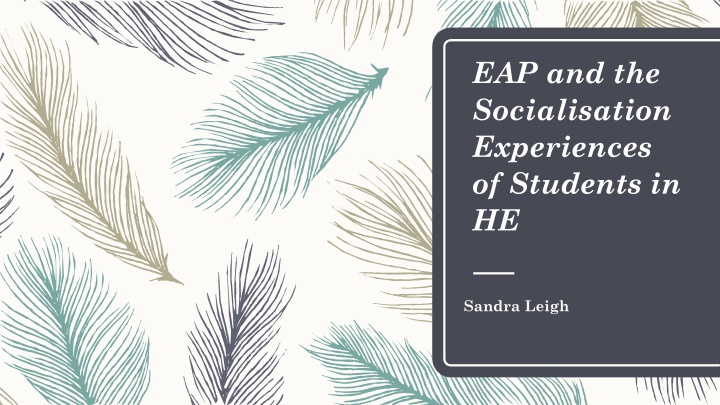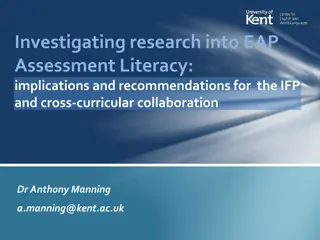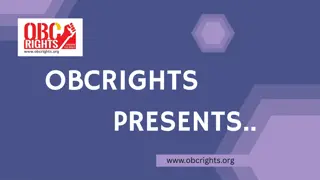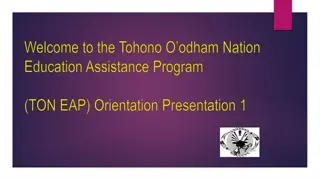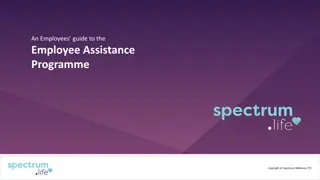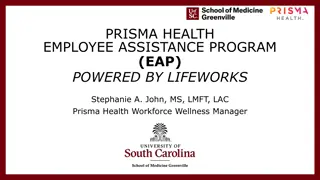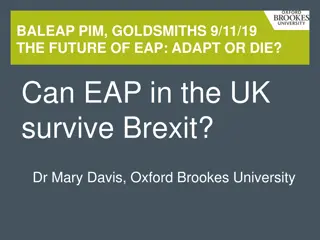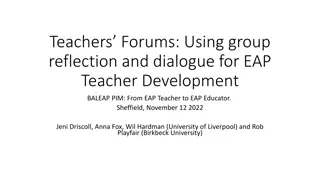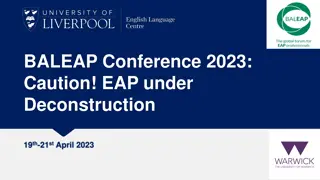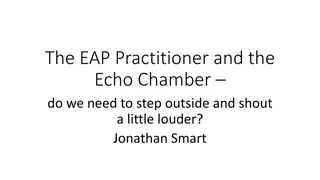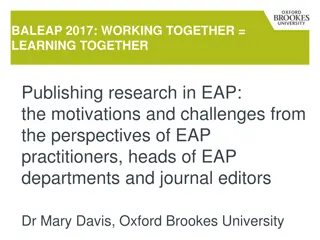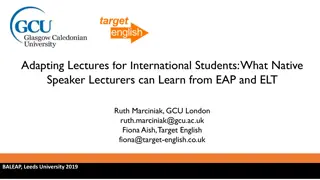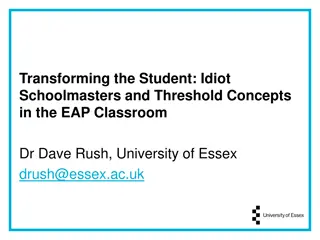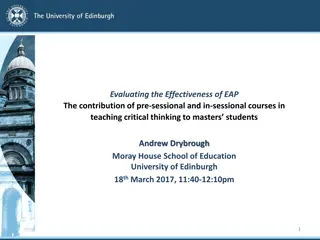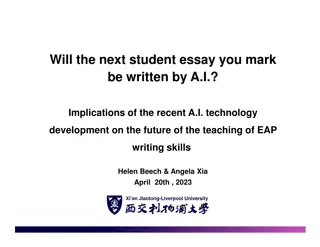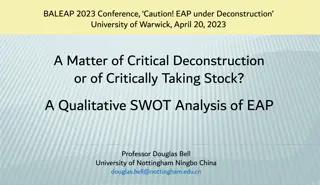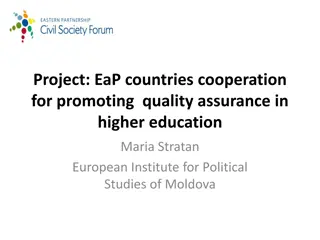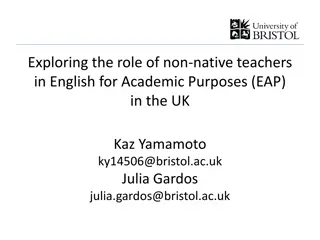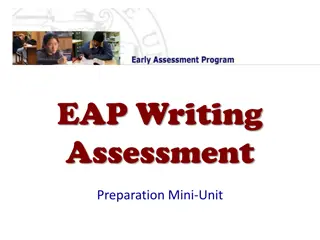Exploring the Socialisation Experiences of Students Post-EAP in Higher Education
Delve into Sandra Leigh's research on post-EAP experiences of students in higher education, examining the value and impact of EAP education on students' transition and adaptation to the university setting. The study focuses on socialisation theories, research methodology, findings, and lessons learned, shedding light on the contributions of EAP to students' experiences and skill development.
Download Presentation

Please find below an Image/Link to download the presentation.
The content on the website is provided AS IS for your information and personal use only. It may not be sold, licensed, or shared on other websites without obtaining consent from the author.If you encounter any issues during the download, it is possible that the publisher has removed the file from their server.
You are allowed to download the files provided on this website for personal or commercial use, subject to the condition that they are used lawfully. All files are the property of their respective owners.
The content on the website is provided AS IS for your information and personal use only. It may not be sold, licensed, or shared on other websites without obtaining consent from the author.
E N D
Presentation Transcript
EAP and the Socialisation Experiences of Students in HE Sandra Leigh
Just a thought . . . What do we really know about our students post-EAP experiences? What value is there in such information?
The Rationale The weakest link: former students What are their post-EAP experiences? Did their EAP education really serve them? How did it help them adapt to the wider HE context?
Outline EdD Research Socialisation theories research methodology Findings Lessons learnt
The Research Questions How can EAP more effectively contribute to students experiences? What are the socialisation experiences of post- EAP students? What is EAP s contribution to these experiences?
The EdD Research: socialisation as the framework the process by which persons acquire the knowledge, skills, and disposition that make them more or less able members of their society (Brim, 1966:3) Four stages: anticipatory, formal, informal, and personal (Weidman, 1987) Interacting with others & setting (Bragg, 1976)
The Research Methodology: Semi-structured interviews multiple student interviews Participants: 13 EAP Foundation (Bus. & Law) students 6 lecturers 4 EAP tutors Other data: End of Year Grades; pictures (photo elicitation)
Findings: general A year later, attitudes to EAP input still mostly positive Students used the skills learnt on their EAP programme Familiarity with settings & university systems Formed networks Spaces: campuses, classrooms, libraries Exposed to systems: Moodle, Outlook EAP programmes served as anticipatory socialisation Writing skills Group work (working in groups was standard; only 1 struggled)
Findings: differences Disciplinary differences Law students less satisfied No content input More disciplinary jargon But . . . Individual transitional experiences More successful, smoother transition Less successful, more difficult transition
Victoria & Thomas Differences Similarities South East Asia although different countries Linguistic abilities Agentive and conformist Passed FP with a distinction Enrolled on LLB programme Initially very stressed
Victoria & Thomas Victoria Thomas First year average 63% First year average 45% & 2 resits Challenged structures; used a variety of network Chameleon (Bragg, 1976) Balanced study/social life Limited network Year 3: expecting to graduate with 2:1 Took time off in year 2; resumed though
Grace & Faith Similarities Differences Nigeria; Attitudinal differences Can-do attitude Strong English language skills Passed FP with a distinction Enrolled on LLB programme
Grace & Faith Grace Faith First year average 58% Exploitation of institutional opportunities Dovetailing of personal and institutional goals EAP input was definitely useful Now enrolled on an MA programme First year average 57% Difficult year; fragmentation of personal and institutional goals Considered dropping out of the LLB programme Sought significant support from family EAP was not as useful - ???
Lessons Learnt Networking and peer- mentoring potential: Are we tapping into this? Could post-EAP students mentor current EAP students? EGAP/ESAP debate: content input is considered valuable, but EAP is also a pedagogical intervention; adopt iterative approach Socialisation = an ongoing process; EAP integral part behaviours that support lifelong learning agentive & autonomous behaviours challenge & question
What next? How can we develop empowering relationships & agency on EAP programmes? How can we involve former EAP students in our programmes (design delivery, review)? What challenges are there with such involvement?
References Bragg, A. K. 1976. The Socialization Process in Higher Education. [Online]. Washington, D.C.: Publications Department, American Association for Higher Education. Available at: https://eric.ed.gov/?id=ED132909 Brim, O. G. 1966. Socialization through the Life Cycle. In Socialization after Childhood: Two essays (pp. 3-49). New York: John Wiley Weidman, J. C. 1987. Undergraduate Socialization. ASHE Annual Meeting Paper. ASHE Annual Meeting. Paper presented at the Annual Meeting of the Association for the Study of Higher Education. Baltimore, MD.
